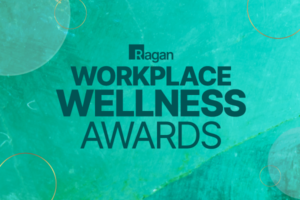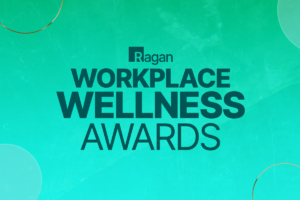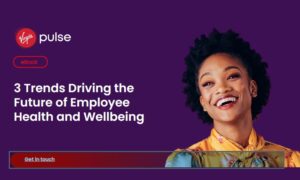Keep an eye on health
Why companies need to consider vision care as employees return to the office.

As COVID-19 restrictions continue to lift in many areas across the country, the debate over when (or whether) employees should return to the office, work entirely remotely or adopt a hybrid working model is heating up.
In the past few months, a handful of the most influential tech companies in the U.S delayed their return dates. For example, Google became the latest major company to announce another delay in its return-to-office (RTO) plan. Google previously planned its return for January 2022, which was a delay from October 2021, which was a delay from September, which was a delay from July.
No matter when companies plan to return to the office, employers should give greater focus to supporting healthy vision and providing vision benefits, in addition to physical safety, when adjusting and communicating their RTO plans. During a time when employees are spending more time in front of their computers and smartphones than ever, employers should focus on the importance of implementing workplace wellness initiatives that help to protect and preserve the health of employees’ eyes wherever they are.
According to the 2021 Transitions Optical Workplace Wellness Survey, more than half of the 1,300 U.S. employees surveyed spend more time in front of their work computer screens now than before the pandemic began. Among those employees with increased screen time, 85% report frequent experiences of digital eyestrain[i].
After all, almost half (47%) of employees agree that the top way to improve their overall productivity and quality of work would be encouragement by employers to take breaks to rest their eyes and prevent eyestrain versus receiving fitness financial assistance (45%) or being offered catered lunches by their employers (40%). Although many employees are interested in taking breaks to rest their eyes to help increase their productivity, only one-third of their employers are actually implementing it as a workplace wellness initiative[ii].
Boost employee productivity and health with workplace wellness initiatives
Incorporating vision care into a workplace wellness program can help maintain or improve overall employee health and well-being. Employee wellness and its relation to increased productivity emphasizes the importance of ensuring RTO plans include workplace wellness initiatives that help protect employee eye health, such as offering breaks to rest eyes and vision benefit plans with premium lens options to help protect against harmful blue light and alleviate digital eyestrain.
The American Academy of Ophthalmology (AAO) notes that staring at screens and digital devices for long periods can lead to dry and tired eyes, as well as blurry vision, fatigue or eyestrain—emphasizing that when employees can’t see well, they can’t work well. The AAO suggests taking regular breaks using the “20-20-20” rule: Every 20 minutes, moving eyes to look at an object at least 20 feet away, for at least 20 seconds.
Annual comprehensive eye exams, typically included in a vision benefits plan, not only identify common problems with vision—such as trouble seeing up close or far away—eye exams also are a way to detect eye diseases and serious overall health issues earlier on to help ensure better outcomes and save on medical costs.
Attract and retain employees with premium vision benefits
With many open positions available due to the Great Resignation, this is creating tremendous competition in the hiring market, resulting in employers offering increased pay and vacation time, growth opportunities and even benefit perks to stand out.
Now more than ever, employers must invest in the health and wellness of employees and their families. Offering comprehensive premium vision benefits plans, especially at a time when employees report they are increasingly experiencing the painful effects of digital eyestrain, can help an employer attract and retain employees.
Employees not only need vision benefits, they want them. Employees report a growing interest in vision benefits plans that cover premium and protective eyewear options. Nearly nine in 10 employees say they would be more likely to enroll in a vision benefits plan that covers eyewear that helps protect against harmful blue lighti.
With increased demands on their eyes, employees are looking toward eyewear to help alleviate their digital eyestrain symptoms, with one-third of employees saying they will seek information on blue light eyeglasses, update their prescription or buy new glassesi.
Fortunately, there are premium lens options covered by many quality vision plans that help to reduce harmful blue light exposure and combat digital eyestrain—and this is good news for employers, considering nine out of 10 employees agree that wearing lenses that help protect against harmful blue light specifically will make them more productiveii.
Low in cost, vision benefits offer a high return on investment for employers and can help save on medical expenses, boost employee productivity and even help attract and retain top talent. Vision benefits are good for an employer’s bottom line. Research has shown that even slightly miscorrected vision—so slight that an employee doesn’t even notice—can decrease productivity by up to 20%, making routine eye exams for all employees important[iii].
With 70% of people indicating that protecting their eyes and their eye health is more important to them now than pre-pandemic[iv]—and with more employees looking toward eyewear and blue light filtration options—ensuring that a workplace offers comprehensive vision benefits plans that cover premium eyewear options alongside a workplace wellness initiative that encourages employees to rest their eyes is more essential than ever for businesses.

Jonathan Ormsby is a Senior Key Account Manager for Transitions Optical.
To help elevate the importance of comprehensive eye exams and quality eyewear available through vision benefits, Transitions Optical offers a variety of employee and employer-focused tools and education. These can be accessed, free of charge, at HealthySightWorkingforYou.org.
- [i] 2021 Transitions Optical Workplace Wellness Survey conducted online and fielded by Wakefield Research on behalf of Transitions Optical in January 2020 among 1,300 nationally representative U.S. adults, ages 18+, who are employed full- or part-time and whose employers offer vision benefits.
- [ii] 2020 Transitions Optical Workplace Wellness Survey conducted online and fielded by Wakefield Research on behalf of Transitions Optical in January 2019 among 1,300 nationally representative U.S. adults, ages 18+, who are employed full- or part-time and whose employers offer vision benefits.
- [iii] Daum, Kent, et al. Productivity associated with visual status of computer users. Optometry 2004; 75
- [iv] Transitions Optical, Global Consumer Sentiment and Behavior, Multi-country survey (AR, AU, CO, FR, IT, SG, ZA, UK, US), Q4 2020, People Research, N=6,403, N=700 per country – Eyeglasses wearers agree to say Top2Boxes.
COMMENT
Ragan.com Daily Headlines
RECOMMENDED READING
Tags: employee benefits, eye strain, eyewear, Jonathan Ormsby, Transitions Optical, vision benefits






